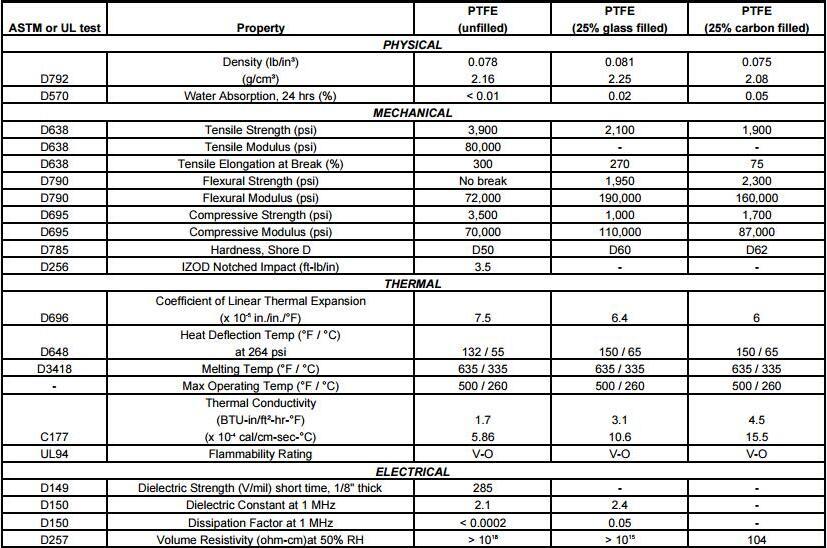Polytetrafluoroethylene (PTFE) is a synthetic fluoropolymer of tetrafluoroethylene that has numerous applications. The best known brand name of PTFE-based …
PolyTetraFluoroEthylene is a fluorocarbon-based polymer and is commonly abbreviated PTFE. Several other manufacturers make their own brands of PTFE which can often be used as substitute materials. This fluoroplastic family offers high chemical resistance, low and high temperature capability, resistance to weathering, low friction, electrical and thermal insulation, and “slipperiness”. ( see also polymer® PTFE and polymer® FEP & PFA Specifications ) PTFE’s mechanical properties are low compared to other plastics, but its properties remain at a useful level over a wide temperature range of of -100°F to +400°F (-73°C to 204°C). Mechanical properties are often enhanced by adding fillers (see paragraph below). It has excellent thermal and electrical insulation properties and a low coefficient of friction. PTFE is very dense and cannot be melt processed — it must be compressed and sintered to form useful shapes.
PTFE’s mechanical properties can be enhanced by adding fillers such as glass fibers, carbon, graphite, molybdenum disulphide, and bronze. Generally, filled PTFE’s maintain their excellent chemical and high temperature characteristics, while fillers improve mechanical strength, stability, and wear resistance. The properties of 25% glass-filled and 25% carbon-filled PTFE grades are shown below for comparison purposes. There are literally dozens of different filled PTFE products and grades — too many to be listed here.
 TYPICAL PROPERTIES of PTFE
TYPICAL PROPERTIES of PTFE
NOTE: The information contained herein are typical values intended for reference and comparison purposes only. They should NOT be used as a basis for design specifications or quality control. Contact us for manufacturers’ complete material property datasheets . All values at 73°F (23°C) unless otherwise noted.
Post time: Nov-03-2016

